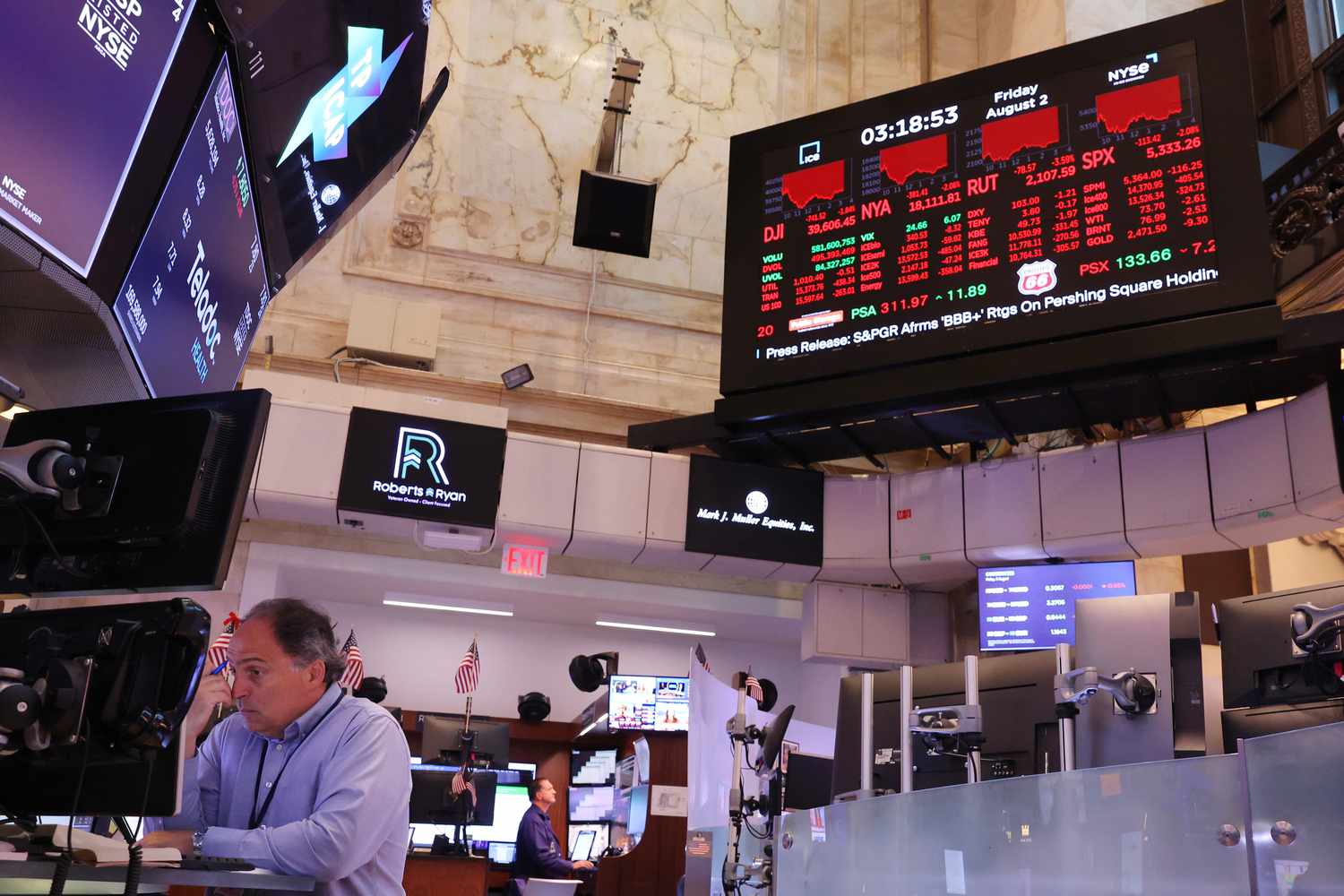A sharp wave of selling hit Wall Street on Monday as anxiety surrounding Nvidia and the fragility of the AI-driven rally pushed markets into a deeper risk-off mood, forcing institutions to reassess portfolio concentration, liquidity exposure and short-term market structure pressures.
Rapid swings in mega-cap technology stocks change the calculus for asset managers in ways retail investors rarely see. When a single company becomes a pillar of index performance—both in returns and sentiment—large drawdowns do more than move prices: they reshape the operational, risk, and allocation decisions that govern modern capital markets.
How an AI-Led Sell-Off Exposes Concentration Risk
The rise of Nvidia has transformed large-cap indices, leaving many funds far more exposed to a single stock than historical norms. In environments like this, declines don’t just reduce performance—they can shift entire portfolio profiles overnight.
Institutional investors typically respond by reviewing:
-
index-weight drift
-
single-name exposure
-
sector imbalance created by multi-year AI inflows
These reviews aren’t about predicting the next move; they’re about ensuring allocations remain aligned with mandates as the market reprices risk.
Why Market Structure Tends to Amplify Mega-Cap Reversals
AI-linked stocks sit at the intersection of multiple market mechanics: derivatives, passive flows, and volatility-linked strategies. When they fall sharply, several forces often move at once:
-
ETF rebalancing pressure accelerates as weightings distort
-
Options dealers hedge in ways that can exaggerate intraday moves
-
Trend-following funds mechanically reduce exposure
-
Passive funds transmit losses across retirement accounts and pension plans
This interplay explains why declines in a single mega-cap stock can feel systemic even when fundamentals elsewhere remain stable.
👉 Further Reading: Nvidia CEO Jensen Huang Offloads an Additional $12.94 Million Worth of Shares 👈
A detailed breakdown of Huang’s latest stock sale and what insider transactions typically signal for institutional investors, governance analysts, and market-structure observers. This piece examines how insider selling is interpreted within SEC disclosure frameworks—and why timing, form filings, and trading windows matter more than headline numbers.
How Institutions Navigate Volatility Under Regulatory Expectations
In periods of heightened price swings, financial firms shift into process-focused mode. This includes rechecking suitability for client mandates, reviewing risk modelling assumptions, and ensuring documentation reflects how the firm responded to changing market conditions.
Regulators do not require advisers to anticipate the direction of volatility. What matters is whether firms:
-
documented risk assessments appropriately
-
communicated material risks accurately
-
ensured portfolios still matched client profiles
Regulatory oversight intensifies when volatility becomes concentrated rather than broad-based.
How Liquidity Rules Interact With Sudden Market Stress
U.S. funds operate under strict liquidity monitoring requirements. Sudden increases in volatility can prompt firms to revisit liquidity classifications, stress-test redemption scenarios, and evaluate whether transaction costs have changed in ways that might affect execution.
These are routine steps but become more frequent when fast-moving markets create pricing uncertainty—particularly in sectors like technology where trading volumes can spike dramatically.
Investor Misconceptions Around ‘Extreme Fear’ Indicators
Public sentiment gauges often create the illusion of predictive power. For institutional desks, however, they’re simply measures of current volatility—not forecasts.
When fear indicators move sharply, asset managers typically incorporate them into volatility modelling but do not treat them as signals to overhaul strategy. Their role is descriptive, not prescriptive.
The Broader Question: Is the AI Boom Vulnerable to a Confidence Shock?
The AI trade has carried markets for nearly two years. But structurally, its dominance makes it sensitive to even small dips in corporate performance, supply chain expectations, or capital expenditure projections.
A confidence shock—rather than a fundamental collapse—is often enough to reposition global flows:
-
multi-asset portfolios hedge more aggressively
-
foreign investors reduce U.S. tech concentration
-
quant strategies adjust factor exposures
-
corporate buybacks temporarily pause
This is the real story behind the volatility: not whether AI is overvalued, but how dependent the market has become on a narrow set of companies.
What Happens Next
If volatility persists, institutional focus will remain on concentration risk, liquidity stability, and the potential for mechanical selling from ETFs and derivatives strategies. Market structure—not just company performance—will determine how deep or short-lived the turbulence becomes. The coming week will signal whether the AI trade stabilises or enters a new phase of recalibration.
FAQs: Nvidia, Volatility and Market Structure
Does a drop in one mega-cap stock really affect the entire market?
Yes. When a stock holds an unusually large index weighting, volatility can spill into ETFs, pension funds and derivative markets.
Do institutions have to rebalance during sell-offs?
Not automatically. They must ensure allocations remain aligned to mandates but rebalancing depends on strategy and risk parameters.
Why is the AI trade so sensitive to earnings expectations?
Because valuations are tied to long-term growth assumptions. Even small adjustments to future demand can create large short-term price movements.
Are fear indicators predictive?
No. They reflect market sentiment but do not provide directional forecasts.














